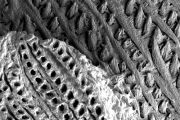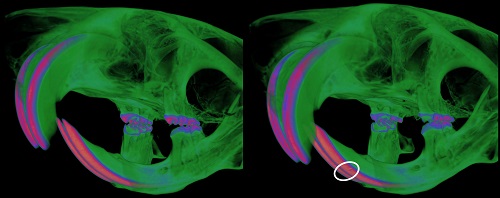A link between autoimmune disorders and tooth enamel defects revealed
In a groundbreaking study published in Nature, an international team of researchers has discovered a crucial link between autoimmune disorders and defects in tooth enamel development. This study sheds light on the poorly understood conditions of Amelogenesis Imperfecta in patients with Autoimmune Polyglandular Syndrome Type-1 (APS-1) and Celiac Disease.
Ameloblasts, the cells responsible for tooth enamel formation, rely on several proteins to create a durable outer layer for our teeth. When these proteins are attacked by the body’s immune system, it leads to Amelogenesis Imperfecta, a condition characterized by weakened, discolored, and easily damaged teeth. This condition has long puzzled the medical community, but the new study led by Jakub Abramson from the Weizmann Institute in Israel offers unprecedented insights.
The research team, including notable contributions from Dr. Jan Prochazka from Czech Center for Phenogenomics, has utilized advanced technology to analyze tooth phenotypes, shedding light on the processes disrupting enamel mineralization in autoimmune conditions. The study reveals that most patients with APS-1 and Celiac Disease develop autoantibodies, particularly of the IgA isotype, against ameloblast-specific proteins. This results in a breakdown of the body’s tolerance to these proteins, leading to compromised enamel formation. In Celiac Disease, this phenomenon appears to be linked to a loss of tolerance to intestinal antigens that are also present in enamel tissue. These findings suggest a novel type of IgA-dependent autoimmune disorder, which the researchers have collectively termed “autoimmune amelogenesis imperfecta.”
Publication:
Gruper, Y., Wolff, A. S. B., Glanz, L. et al. Autoimmune amelogenesis imperfecta in patients with APS-1 and coeliac disease. Nature (2023).
https://doi.org/10.1038/s41586-023-06776-0
https://www.nature.com/articles/s41586-023-06776-0

Fig. 1: Microstructure of mouse rodent enamel from a scanning electron microscope. Section, magnified 3500×. The majority of the image shows intact enamel (dark grey shades) with rows of enamel prisms (single larger ‘crystals’ protruding from the surface of the section); in the lower left quadrant (light grey shades) there is an area of enamel with disturbed structure due to poor mineralisation and remnants of the original protein scaffolding that was broken down during the formation of the intact enamel. Taken in the Laboratory of Imaging Methods at the BIOCEV Centre. Source: Weizmann Institute of Scienc

Fig. 2: Reconstruction of mouse skulls from computed tomography in pseudocolours that distinguish enamel (blue and orange) from bone and dentition (green). Healthy mouse on the left, mutant on the right with the defect resulting from enamel formation highlighted. Taken at the Czech Center for Phenogenomics at BIOCEV. Source: Weizmann Institute of Science
The Czech Centre for Phenogenomics (CCP), at the Institute of Molecular Genetics, led by Radislav Sedlacek is a hub of excellence in genetic research, uniquely integrating genetic engineering, advanced phenotyping, and state-of-the-art imaging within a controlled animal housing environment. The CCP is renowned for its creation of sophisticated mouse and rat models, essential in dissecting genetic disorders and testing medical interventions. As an active member of global consortia like IMPC and INFRAFRONTIER, the CCP contributes to an international effort to map gene functions and their implications in human diseases.